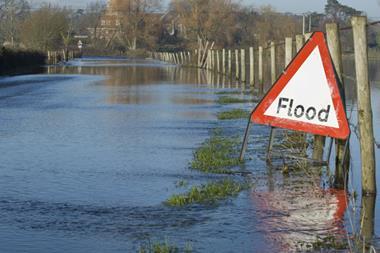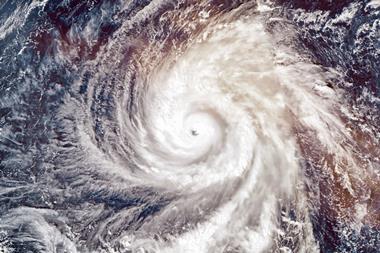New research provides greater certainty around potential flood events and their location – but how will these details impact the cover offered by insurers?
By Jon Guy
This month has seen yet more research into the threat faced by the UK when it comes to flooding.
A team from the University of Bristol and the Met Office released research results on 7 March 2023 that featured a far higher resolution model to predict the country’s future flood threat.
These results warned that under a high greenhouse gas emissions scenario, extreme rainfall events could be four times as frequent by 2080 compared to the 1980s.

Less sophisticated models, however, have depicted a much lower increase in extreme rainfall events – these indicate that this type of incident will be two and a half times more frequent over the same reporting period.
The higher resolution Met Office model additionally revealed that likely increases in extreme rainfall situations were significantly greater in certain regions.
Lead author and Met Office climate scientist Lizzie Kendon, professor of climate science at the University of Bristol Cabot Institute for the Environment, said: “Being able to look at our projected future climate in such detail has unlocked an incredible amount of information and has shown how expected increases in intense rainfall events will actually manifest at local scale and for the coming years.
“Having this level of detail is crucial to ensure that we’re prepared for the possible extremes of the future.”
Insuring an expected event?
The predicted uptick in extreme rainfall events poses a fundamental question for insurers.
Thanks to higher resolution models, rainfall estimates can now be delivered with greater certainty - and these models will only get better as technology continues to advance.
Read: Flood Re completes East Peckham pilot to score properties’ flood resilience
Explore more news analysis here, or read risk management-related stories here.
Where does that leave insurers? If these models are 100% convinced that there will be major rainfall and flood events at a specific locality once a year, suddenly the core role of insurers to provide cover for the unexpected goes out of the window.
Insurers are commercial entities and shareholders expect a profit. We have already seen reinsurers retreating from major natural catastrophe risks this year.
Insurers now have the capability to know with certainty that a property will suffer flooding – they are therefore under pressure to provide cover for claims which are sure to come, without a reinsurance safety net.
The future may well see insurers having to become far more prescriptive around the levels of mitigation they require for flood prone properties if they are to offer any type of cover. It may mean a move to parametric policies, with the trigger point set to a level which is deemed to be an extreme and unlikely event.
Whatever the possible solutions, the market will need to address this issue sooner rather than later - or face shareholder ire.












































No comments yet